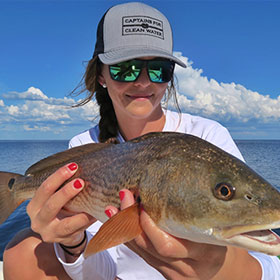Top Fishing Boat Safety Tips You Need To Know
By Alycia Downs
Nov 07, 2018
Safety is priority number one on the water. Learn fishing boat safety tips, requirements and smart boating practices to keep you and your family safe on the water.
When on the water, there is nothing more important than safety. As a boater, it is your duty to yourself, your passengers and fellow boaters, to operate your vessel responsibly and with a full understanding of smart practices and fishing boat safety requirements. Here are some fishing boat safety tips that you need to know.
1. Take a Boater Safety Course
A safety course is the ideal way to learn all about boating safety and requirements. It can be completed online in most states. Check your state for more information on boater safety programs.
2. Pack a Ditch Bag
A ditch bag is a compact, buoyant bag that is stocked with critical boat safety gear that you might need in an emergency. The items in your ditch bag would enable you to summon help and survive in a life raft. It should be stored in a secure, accessible place on your vessel so that it can be grabbed quickly in an emergency.
3. Stow all minimum required Safety Equipment
The U.S. Coast Guard has certain fishing boat safety requirements that recreational vessels must abide by. This includes items such as life jackets, a fire extinguisher, a visual distress signal, and a sound-producing device, but also has certain engine and lighting requirements. Learn more by visiting the USCG’s website or checking with your state agency.
4. File a Float Plan
A float plan ensures that a reliable person is awaiting your return. Download a float plan form online then complete it before you go boating. Leave it with a reliable person who will notify the Coast Guard, or other rescue agency, if you don’t return or check‐in. Notify your plan-holder of any delays and of your safe arrival home to close out the float plan. Of all fishing boat safety tips, this one ensures someone is looking out for you.
5. Know your Waterways
Familiarize yourself with, not only markers and channels, but with the landscape beneath the surface. Study charts or maps to know where to avoid sandbars, shallow areas, and even sunken debris.
6. Plan for the Elements
Check the tides and the weather so you can pack the proper safety gear and route your course for the day.
Learn more basic fishing boat safety tips on our website. If you’re ready to start fishing, be sure you have a valid fishing license first. Being a responsible boater and angler will keep our waterways safe for everyone to enjoy!









